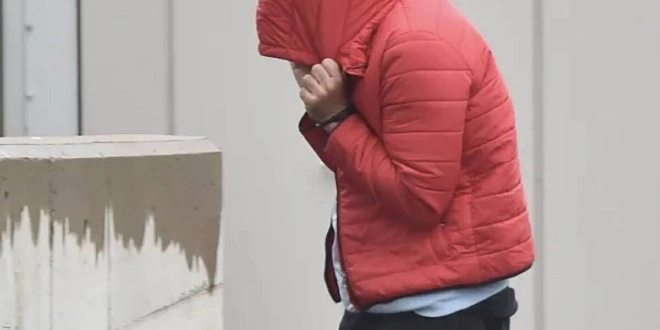Eight individuals have been sentenced to prison terms ranging from 13.5 to 20 years for their roles in attempting to smuggle over two tonnes of cocaine valued at more than €157 million. The case stems from a large-scale joint operation conducted in September 2023 by Irish police, customs officials, and the Defence Forces. The seizure marks the largest cocaine haul recorded in Ireland.
The illicit cargo was discovered aboard the MV Matthew, a cargo ship intercepted at sea by Irish Army Rangers. The operation followed intelligence indicating a major drug trafficking attempt organized by a sophisticated transnational criminal group.
Complex Operation and Coordinated Capture
The MV Matthew was boarded after it failed to respond to repeated instructions from the Irish Naval Service vessel LÉ William Butler Yeats. The suspects onboard attempted to destroy the contraband by setting fire to the drugs before the Army Rangers successfully stormed the vessel. Meanwhile, two other men involved in the smuggling plan had attempted to retrieve the drugs via a secondary boat, the Castlemore, which was purchased in Castletownbere. However, the vessel ran aground off Wexford’s coast, prompting a Coast Guard rescue.
Among those convicted were six men recruited in Dubai and subsequently transported to South America as part of the drug smuggling mission. They include Ukrainian nationals Mykhailo Gavryk and Vitaliy Vlasoi, Iranian citizens Soheil Jelveh and Saeid Hassani, Filipino Harold Estoesta, and Dutch national Cumali Ozgen. Each pleaded guilty to possessing cocaine for distribution between September 24 and 26, 2023.
Two additional men, Jamie Harbron from the UK and Ukrainian citizen Vitaliy Lapa, admitted to attempting to possess the cocaine between September 21 and 25 of the same year. Harbron had purchased the Castlemore to aid in the offloading of the cargo from the mothership.
Role of the Transnational Cartel
Investigators revealed that the smuggling operation was orchestrated through encrypted WhatsApp communications, coordinated by a global crime syndicate based in Dubai. According to Detective Superintendent Keith Halley, the group used a cell-structured model to reduce damage in the event of interception. Communications continued up until the vessel’s interception, with messages downplaying the threat from authorities and advising crew members to remain calm and compliant.
Suspects were also misled into believing that Irish forces had no jurisdiction in international waters, prompting them to attempt a diversion towards Sierra Leone. Despite these efforts, Irish authorities pursued and halted the vessel.
Dutch national Cumali Ozgen played a key leadership role on the ship, acting as the main contact with the cartel and handling communications and logistics. Although he lacked seafaring experience, he was given top-tier accommodations and promised a bonus of €50,000 upon completion of the mission.
Detailed Accounts of the Defendants’ Involvement
Captain Soheil Jelveh, a qualified marine engineer, acknowledged he was aware that the cargo was not legitimate and claimed he had no choice but to follow orders under threats of violence. He was medically evacuated before the ship was boarded, in possession of large sums of cash and several phones, including encrypted devices. He later admitted the illness was staged to exit the vessel and that he had received financial compensation.
Second officer Mykhailo Gavryk, a lifelong seaman, cooperated with authorities and was found to have minimal knowledge of the smuggling operation’s broader scope.
Other crew members, including Estoesta and Vlasoi, attempted to mislead the Irish Navy by pretending to follow directives while steering toward open waters. Communications revealed they were instructed to disable radio contact and destroy evidence if necessary.
The swift intervention by two Air Corps helicopters and the Army Ranger wing prevented the destruction of the cocaine and led to the vessel’s successful capture, a move praised in court as both courageous and critical.
Background and Personal Circumstances
The court heard detailed personal histories of each defendant. Some cited financial pressures, health issues in their families, or recruitment under false pretenses. Ozgen, for example, said he was paid to perform ship maintenance but later admitted full awareness of the criminal operation and was promised a six-figure bonus.
Others, such as Gavryk and Estoesta, presented educational and military family backgrounds, emphasizing remorse and commitment to rehabilitation while in custody. Estoesta’s fiancée described the emotional toll of the case on their future.
Jelveh, an Iranian national with a background in academia, maintained that he had feared for his life. He has engaged in educational courses while imprisoned and issued a formal apology.
Vitaliy Lapa, involved in the failed pickup mission, declined to provide phone access to authorities but was ultimately implicated through extracted messages. He denied drug trafficking intent but had signed off on boat purchase documents.
 The Daily Star Ireland
The Daily Star Ireland

